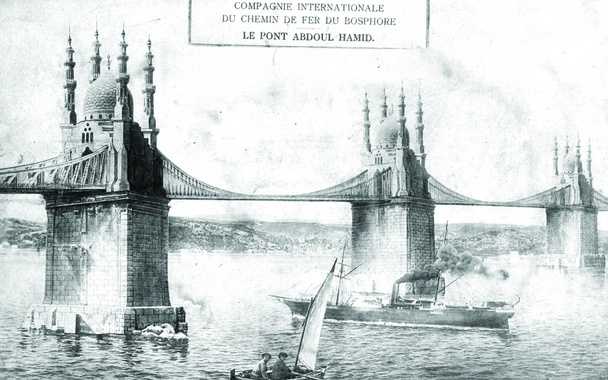The Istanbul That Might Have Been, and Might Still Be
JENNIFER HATTAM
Yitik Hazine Yayınları

Sometime in the not-so-distant future, visitors to Istanbul will be able to soar above the Bosphorus, crossing the famous strait on a transcontinental aerial tramway, the city’s mayor, Kadir Topbaş, announced last month.
With Istanbul in the throes of a building boom, it’s not the only seemingly fanciful idea that’s been floated recently by a public official. During the 2011 election season, Turkish Prime Minister Recep Tayyip Erdoğan unveiled his self-described “crazy project” to build a second, man-made strait parallel to the Bosphorus.
Neither idea has yet reached the actual planning stage, but there’s at least one reason not to doubt them: Both Topbaş’s cable car and Erdoğan’s canal were first envisioned by architects and engineers in Ottoman times, along with other equally ambitious building projects—some of which have actually been carried out.
A book released in Turkish last year, historian Turan Şahin’s The Crazy Projects of the Ottoman Empire, describes some three dozen building schemes of the era, most dating from the 19th century and early 20th century, a period when various sultans sought to transform Istanbul into a Western-style capital.
Some of the projects, such as the Tünel underground funicular, were indeed built and remain a source of pride for the city. Others, like the two bridges over the Bosphorus, could only be achieved in later eras, in very different form than first envisioned. Yet others are only taking shape now, to greatly mixed response.
The metro bridge currently being constructed across the Golden Horn (proposed by French engineer Eugene Henri Gavand in the late 1800s) has been criticized by preservationists, including UNESCO, for its impact on Istanbul’s historic skyline. The building of the Marmaray Project, an underwater rail tunnel first dreamed up in the 1890s, has been mostly lauded, while the reconfiguration of central Istanbul’s iconic Taksim Square—complete with rebuilding of the old Ottoman-era barracks in Gezi Park—has drawn great outcry.
While Şahin’s book takes a laudatory view of the Ottomans’ ambitious plans, their modern counterparts have been decried by the more than 225 academics from various universities who have signed a petition warning of “irreversible damage” from the current Ottoman-inspired building boom. Edhem Eldem, the history professor at Boğaziçi University who organized the petition, has criticized the lack of public input and expert consultation on such projects, calling the “reinvention of [Istanbul’s] Ottoman past” an “alarming” development.
via The Istanbul That Might Have Been, and Might Still Be – Jennifer Hattam – The Atlantic Cities.